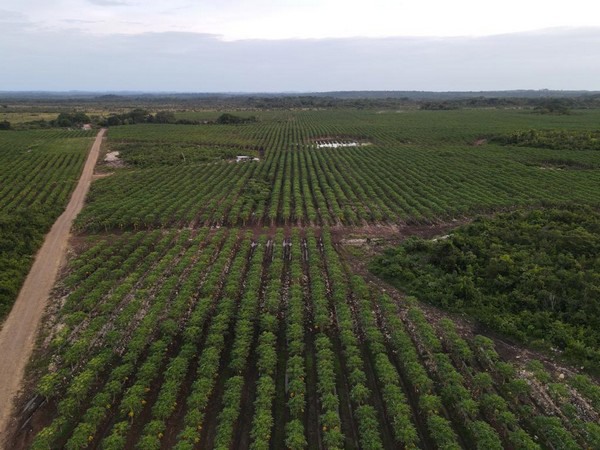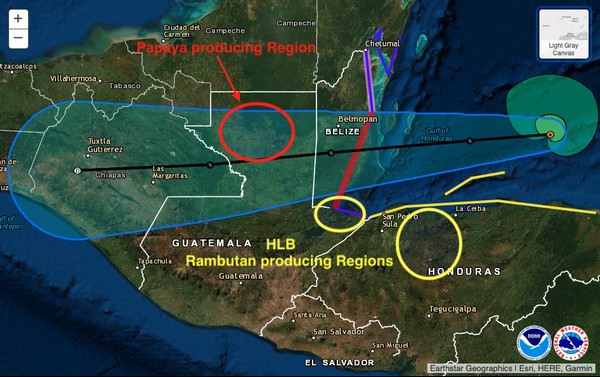Hurricane Nana made landfall in a sparsely populated part of Belize right after midnight on Thursday morning. From there, Nana weakened to a tropical storm, pushing across Guatemala on Thursday. “The storm affected the northern part of Guatemala, the heart of our papaya growing region,” said Andres Ocampo with HLB Specialties. “Fortunately, Nana had turned from a hurricane into a tropical storm after making landfall in Belize. By the time it came over the papaya region, the storm wasn’t as bad as initially thought.” No trees seem to be down, and the amount of rainfall was less than anticipated.
 Papaya trees in Guatemala sustained the winds. Photo taken post-Nana at the farm of HLB's exclusive supplier of the La Carreta brand.
Papaya trees in Guatemala sustained the winds. Photo taken post-Nana at the farm of HLB's exclusive supplier of the La Carreta brand.
Volumes down 25-30%
Growers are happy the soil didn’t have to take as much rain as predicted. “This growing season, we’ve had heavier rains than usual, resulting in lower production volumes and quality issues,” commented Ocampo. Rain on top of rain makes the situation challenging. “Without the storm, shipping volumes were down 25 to 30 percent last week and I expect we will be suffering with lower volumes for the next few weeks as well,” he commented. Recently, Ocampo has been receiving an increased number of requests for papayas, which suggests other US importers are also facing volume shortages.
Mexican volumes down as well
In addition to Guatemala, HLB Specialties also sources papayas from Mexico. However, excessive rains on the Pacific Coast have lowered production volumes and created a perfect storm. “It has resulted in neither Guatemala nor Mexico having sufficient volumes to cover demand now,” Ocampo said. For Mexico, he expects the situation to rebound in the next couple of weeks. “For Guatemala, it remains to be seen. The soil is saturated, impacting the roots of the trees and ultimately resulting in disease issues becoming more prevalent. This has reduced the availability of export quality fruit.”
 Tropical storm Nana blew right through Guatemala's papaya growing region. Credit: National Hurricane Center.
Tropical storm Nana blew right through Guatemala's papaya growing region. Credit: National Hurricane Center.
Prices up
Both countries grow papayas year-round, but production tends to be highest in summer when temperatures are warmer, days are longer, and fruit ripens faster. Historically, summer is also the time of year with the lowest price point. “Not only are papaya volumes abundant in summer, there are so many local crops to compete with that people don’t really need papayas,” shared Ocampo. This year however has been very different. Due to COVID-19, people spent more time at home, retail sales did well, and papaya prices never went down like they historically do. A combination of lower production volumes and steady demand pushed prices up. “We’ve seen a price increase over the last few weeks, and I don’t think they will be coming down soon, at least not for September.”
For more information:
Andres Ocampo
HLB Specialties
Tel: (+1) 954-475-8808
[email protected]
www.hlbspecialties.com










